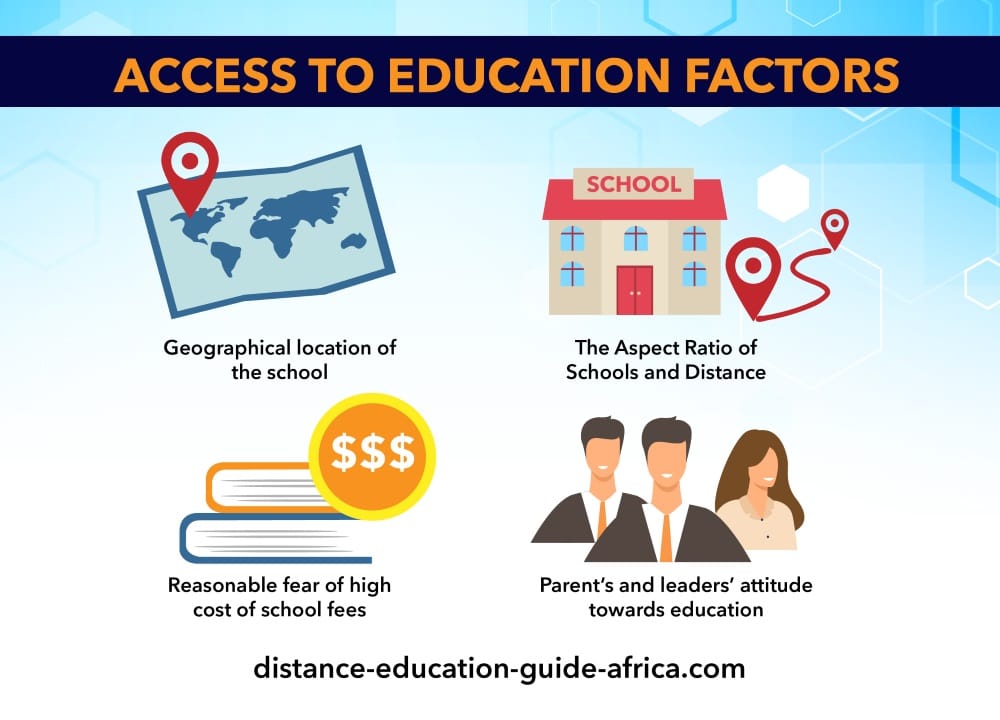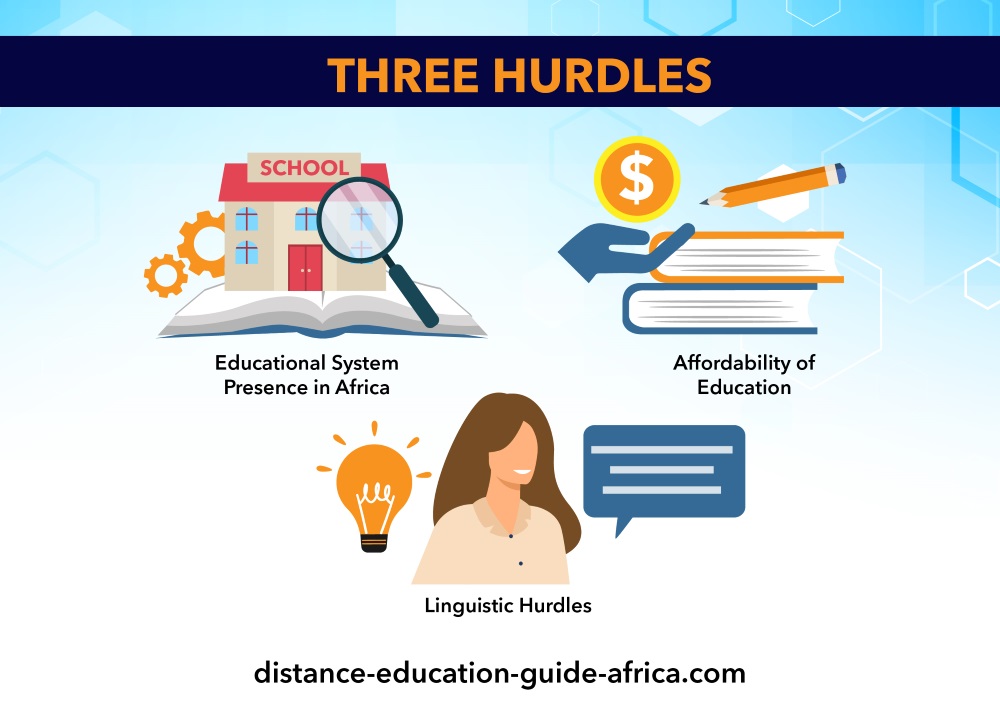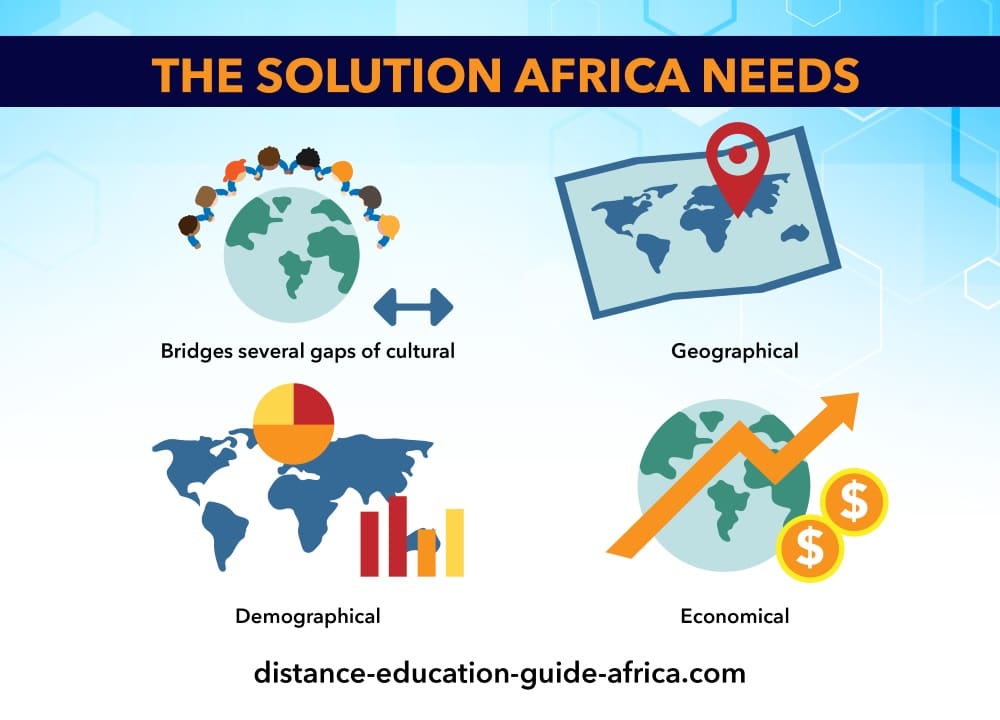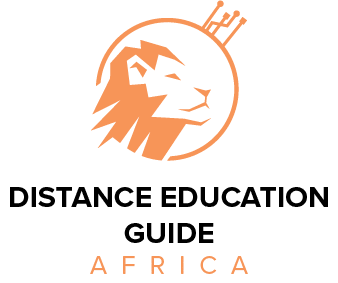Demographic Development vs Educational Needs In Africa
Education inequality is obvious. Not a fun fact but there are 128 million school-aged children in sub-Sahara Africa; of these, 17 million of them will never see a classroom, literary and hypothetically.
Here’s another education inequality fact: 37 million of African children get a chance to attend school, but what they learn never gives them the right footing in today’s economy.
Riddled by poverty, overpopulation, linguistic hurdles and lackadaisical governments, sub-Sahara Africa students find it hard to obtain the level of quality education carved by all.
If you are a student, teacher or an educational professional in Africa – you probably have an inclination towards online courses - mobile learning (m-learning) and e-learning on how they have the power to pave the future of Africa.
That’s one of the reasons to promote distance education and enhance equality in education for Sub Saharan students.
What does “Access to Education in Africa” Mean?
Steady access to education in Africa depends on several factors.
These are factors to reduce inequality of education:

• Geographical location of the school
The location where the schools are situated depends on various factors. Some areas in Africa are densely populated, while others are not. With an effort by governments to start more schools in densely populated areas, there little to smile about. In lesser developed and lesser populated areas, schools are few and in between.
• The Aspect Ratio of Schools and Distance
The number of schools available per region and the distance children must travel to get to school must be considered. Children are forced to travel longer distances to get to school for unfathomable hours with poor road infrastructure and insecurity in their Counties and communities.
• Reasonable fear of high cost of school fees
How many parents can afford to send their children to school, pay hard-earned cash for school supplies in place of basic needs such as food and shelter?
• Parent’s and leaders’ attitude towards education
How many parents and leaders recognize education as a basic right for all? This socio-cultural issue stands at the root of children being pulled out of school and not enough thought put into their right for quality education.
More than 40% of children in seven sub-Sahara Africa countries including Nigeria, Zambia and Ethiopia do not have the basic learning skills expected of a grade 5 student. Dropping out of school at secondary and even primary level is the order of the day in the most part of these regions.
Sadly without the right tools of education, half the children in sub-Sahara Africa will grow up without knowing how to read, write, or count. That causes education and income inequality.
Now, which are the hurdles to overcome the education inequality?

Education Inequality Hurdle #1: Educational System Presence in Africa
Even in regions where educational institutions are less compromised, the enrollment and progress statistics is not encouraging. Owing to the lack of quality teaching and consistency of teaching resources, there’s a great deal of grade repetition.
As a result, the number of children who successfully complete primary grades are few, which means primary schools are fuller than secondary schools.
Speaking of teaching staff, experience teachers with belts of teaching experience under their tenures are paid more than their counterparts who are less experienced. What this translates to is that in schools where most of the staff is senior, the salary figures are high.
This causes schools to hire younger staff and retire the older educators sooner than necessary or expected.
All of these factor into the quality of education provided in these schools.
Given all these factors, the present educational system in Africa is not very effective when it comes to helping young people develop and progress into progressive careers.
Education Inequality Hurdle #2: Affordability of Education
Even though some government-sponsored schools are free, students in many African countries have to pay for school supplies and uniforms.
An average high-school education costs about $500 a year in most African countries. Only a low percentage of Africans who are employed in top industries such as mining, agriculture and oil & gas where salaries are on the higher side are able to afford quality education for their children.
That’s where e-learning providers come in to bridge the education inequality and bring access to affordable education to many of the unschooled children in Africa.
Education Inequality Hurdle #3: Linguistic Hurdles
The medium of instructions used by educators is one of the major reasons for mass school dropouts. In a continent where children have to travel by foot and sometimes by bus or train into inconsiderable distances, given the sub-Sahara Africa’s cultural diversity, there’s always a dialect or language mismatch.
Unfortunately, it’s difficult for children to study in a language other than that of their own.
This can be a high fence for classical education tools based on printouts and face-to-face lessons. For Edtech based lessons with software, the linguistic challenges can be decreased with the help of translation programs, already installed in the e-learning products.
Education inequality is present everywhere.
But here's the kicker: e-learning

Is E-Learning the Solution Africa Needs Today?
E-learning in Africa bridges several gaps of cultural, geographical, demographical, and economical. Anyone can join online courses, age not being a factor.
Massive Open Online Courses (MOOC) are free online courses for those with access to the Internet. These courses do not offer academic credit, though the degree of similarity to that of formal university is that of “close enough”.
Leading online course marketplaces are Udemy and Coursera.
The African Virtual University (AVU) connects students with universities in developed countries to provide MOOC. There are several other organizations offering excellent these programs.
A similar aproach is realized by the Online Business School in UK. It offers remote students the opportunity to study online and to earn an acknowledged degree online.
The good news is, even for students who’ve just and only cleared primary or secondary level schooling, they can still learn with MOOC. Schools and universities use special MOOC software to teach and keep in touch with their students via video tools such as Skype and WhatsApp.
It's the so called blended learning.
However:
How Accessible is the Internet in Africa?
In major parts of Africa, there are regular power interruptions and poor Internet access.
At a time when mobile learning is still catching up, it’ll take several years for e-learning programs to spread over the continent. The plus side is, even with poor online connectivity, the web has penetrated into every African country and continues to do so successfully.
Fast internet connectivity remains to be something to be worked on by the internet and service providers.
Students across Africa transfer money via the Internet, are able to connect with friends over social media, and join in the latest craze which is in online shopping.
A high percentage of Africans has access to the Internet via their PCs and laptops and in their smartphones where they can study as they go on about their work.
That's motivating people to sign up for mobile learning (m-learning) This leads to more online courses being pursued by the young minds of Africa.
With fast internet connectivity, there is a rising amount of local and regional companies which provide products and materials for online courses and exam preparations in m-learning.
How are African Governments Responding to e-learning?
Politicians and leaders across Africa are quick to realize and leverage on the advantages presented by MOOC Edtech. 19 Sub-Saharan African countries have signed up with the African Virtual University (AVU) to establish e-learning as a long-term strategy for educational development.
In addition to governmental initiatives, there are commercial companies filling up the education gap. Initiatives such as the African Leadership University (ALU) program which aims to establish a network of universities to enrich leadership skills to as many African students as possible.
Education Inequality and the Future of E-Learning in Africa
Several governments are working with various countries in the developed world and with NGOs to establish school networks throughout the internet in Sub-Saharan Africa. The new technology-driven policies we’re witnessing in African countries are behind the venture of e-learning.
All these ideas have the purpose to reduce the inequality in education in Africa.
However, along with the policies, Africa needs a streamlined process to ensure proper technical maintenance of e-learning networks.
Also, content development and instructional processes for mobile learning need to be consistent.
Africa has to go the extra mile of making e-learning accessible to all, while sustaining and maintaining local capacities.
And then education inequality will be a story of the past.
Share this article within your friends. or just tell me your thoughts and comment the article!

its a great blog